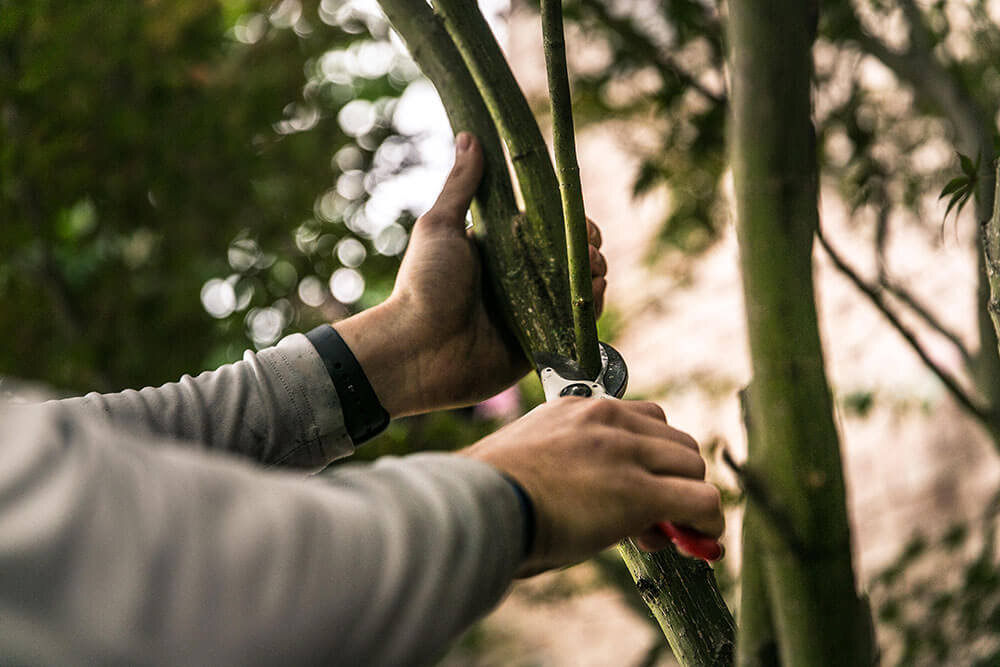How and Why Tree Pruning Is Important to Tree Health
The Benefits of Pruning Trees
Taking care of a tree doesn’t stop a year or two after it’s planted. To have a tree grow into a strong, mature specimen, homeowners can take simple steps every year that guide its growth and set it up for a long, healthy life. Pruning is one of the most important steps to take to positively affect the tree’s strength, to keep its sturdy shape and to focus the tree’s energy on developing its trunk.
Though it’s vital for any tree’s growth, it’s especially important for large shade trees to be pruned as they grow, says Bo Arrington, board member of the Nashville Tree Conservation Corps and arborist with Bartlett Tree Experts. “Sometimes there are two dominant branches that grow and create a fork in the trunk,” Bo explains. “The union here is weak, and so is the bark, leaving it open to insects and disease. Keep the main trunk of the tree by picking the weaker of the two branches where it forks, and remove it.” When trees are out in the open, most will try to form wide shapes so they encompass a larger area to spread their branches and leaves. It’s important to eliminate extra branches that are crossed or growing in weird directions.
Making sure that you’re removing the right branch is important, because some lower branches are beneficial and should be kept for a couple of years. One way to be sure about this is to check in with a certified arborist. A good arborist can identify branches prone to failure and remove those that may become problems down the line.
Helping Trees Weather Nashville Storms
The Nashville area is familiar with damaging storms. Because of this, Bo says, “Shade trees need pruning especially because their big leaves catch the wind. Thinning out a crown on oaks and maples allows the wind to penetrate, blowing through the tree rather than blowing it over.” Some homeowners, however, want to keep their mature trees full and not remove potentially hazardous branches. Arborists can provide a cable structure, which holds the tree and its limbs in place. Bo says this is a popular option to maintain large trees.
Cutting Mature Branches
Ideally, trees should be pruned once a year, though every three to five years is acceptable. Some cuts can be made by homeowners who are experienced or careful to follow guidelines. As Bo explains, “Improper cutting can lead to problems with insects, disease and fungus. Sometimes people cut a limb only halfway, and that cut will eventually decay. The exposed interior will be a place for insects and disease to enter.”
Often, branches are cut too far out from the trunk, and the cut creates a pocket for decay. A cut might also be too close, in which case the branch collar can be damaged. This is a swollen ring of tissue where branches join with the main stem. Bo says a quarter of an inch away from the branch collar is where a cut should be made: “The most important thing homeowners should pay attention to when cutting branches is the distance from the tree collar.”
Knowing the difference between correct pruning, as discussed above, and improper cutting, like tree topping, can be the deciding factor in the health, stability and appeal of your property’s trees. Following the NTCC’s updates and working with an arborist when possible will help you be an informed steward of our neighborhood trees. Join our mailing list to be kept in the loop about our latest activities, local tree policy and advice on tree care!

